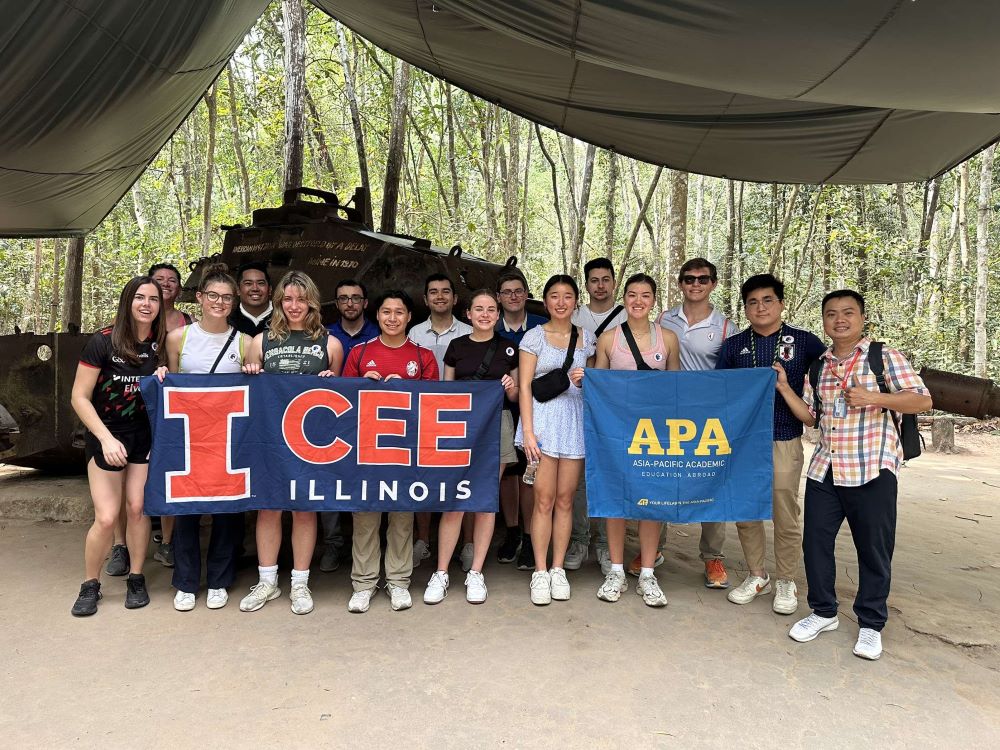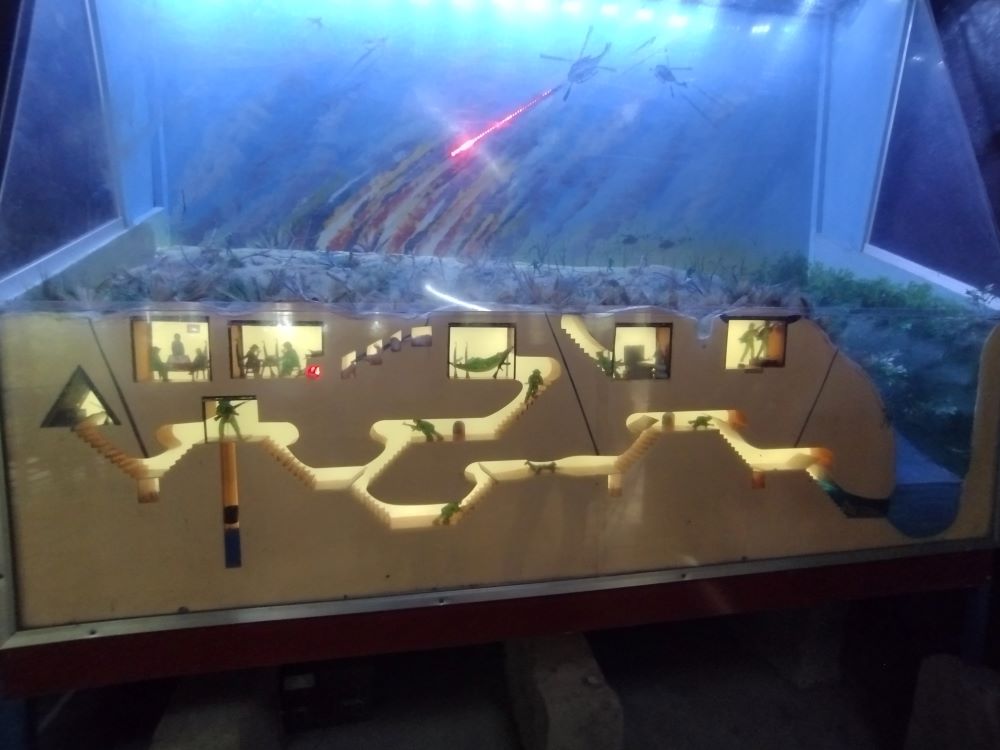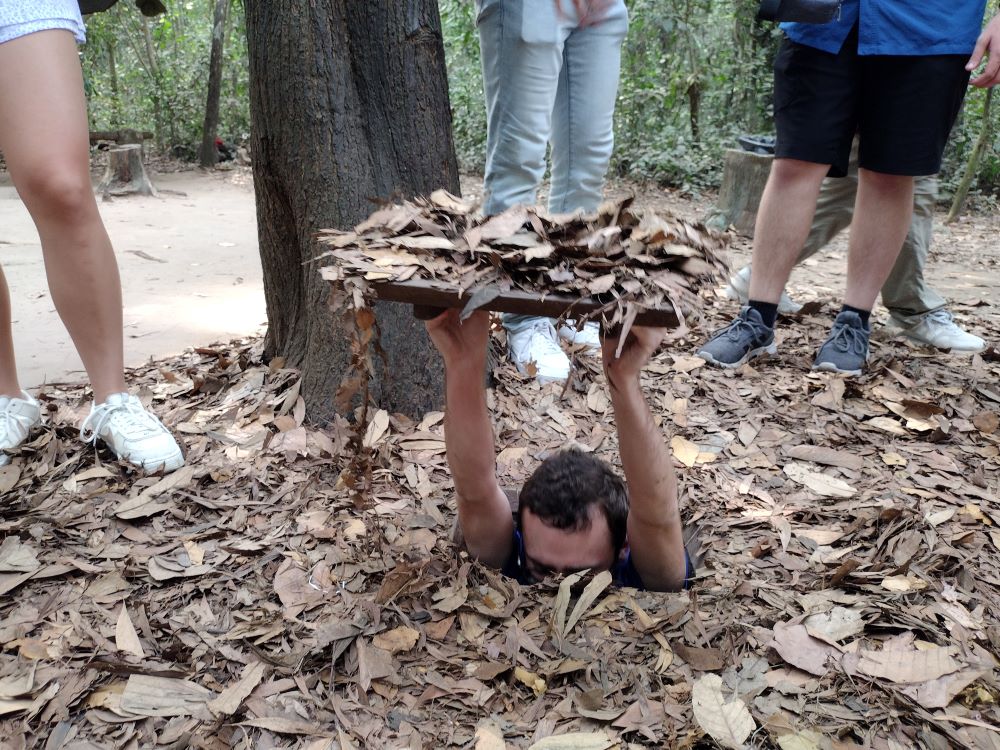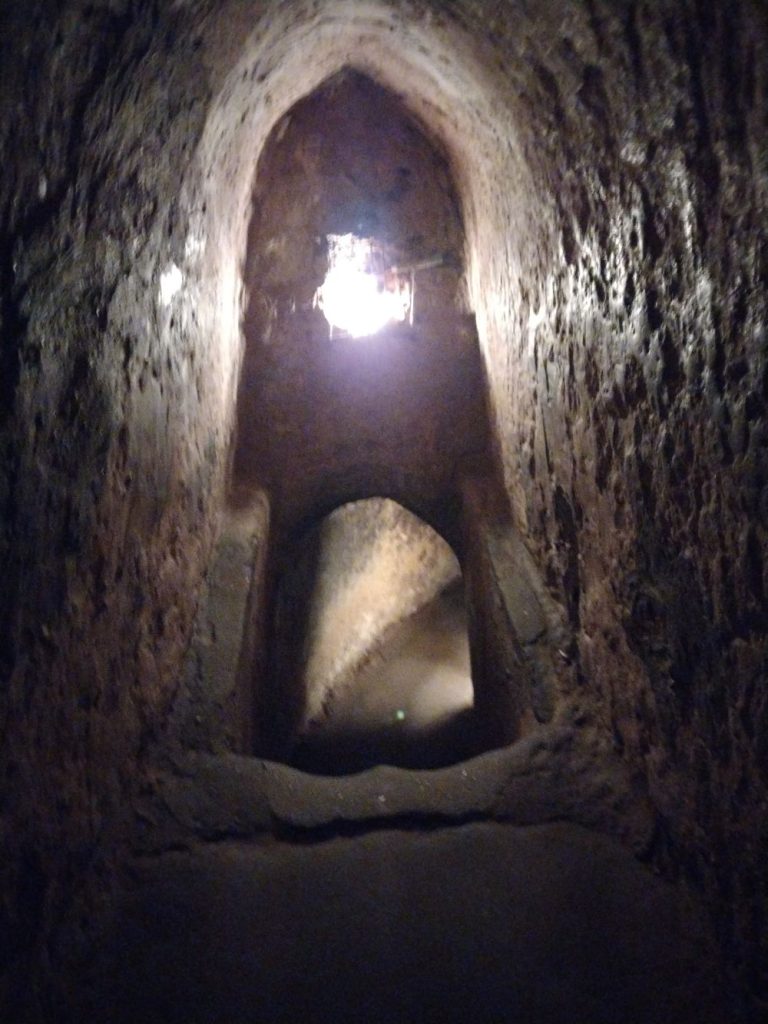In the afternoon we ventured to the Cu Chi Tunnels, located Northwest of Ho Chi Minh City. In 1954, Vietnam separated into the North and South Vietnamese governments, the former supporting communism. It was illegal in South Vietnam to support the North; however, it was more common in the South Vietnamese countryside to illegally support the communist North. Consequently, a secret movement to support the North was formed. During the Vietnam War (known as the American War in Vietnam), these supporters became known as the Viet Cong. They constructed a complex spiderweb-like tunnel system underneath the forest to hide out in the Cu Chi countryside to support and protect the rebel forces in the area.

When we first arrived, our tour guide gave us a presentation about the tunnels. Then we watched an old mini documentary about the rural Cu Chi region, tunnel development, and warfare tactics. We learned that the Cu Chi region was optimal for a military presence because of the nearby river and roadway system. Primitive tools and no machinery were used to build the tunnels. Cu Chi natives would also engage in guerilla warfare tactics against American soldiers, characterized as having “a rifle in one hand and a plow in the other”, scoping out soldiers as riflemen and tending to their farms during the day and night. They also made grenades and other explosives used by the Viet Cong. For the Cu Chi locals, the tunnel system became a symbol of pride during and after the war. A diorama of the profile of the tunnel system is pictured below.

The tunnel system consisted of three levels. The first and most shallow level was dedicated to meetings, cooking, and living spaces. The second level was used if damage or work was done to the first level. The third level was used for occupation when B-52 bombs were dropped. The tunnel system entry and exit points were strategically designed for secrecy. The main access point was from the river because this was difficult for the enemy to identify, which is seen in the bottom right of the diorama.
Soon after, we had the opportunity to interact with the tunnels. We watched a demonstration of accessing one of the underground hiding spaces for Viet Cong. Then, we had the chance to each hide in the hidden hole. This was essentially a very small opening that could just barely fit the average human body size with limited range of motion. The trap door was invisible to the human eye when camouflaged with leaves and brush. You can see one of our GLCM students in the tiny hole in the photo below, moments before he became completely submerged.

We then saw the traps laid to ensnare enemies, which were similar to those used to hunt animals. These included the seesaw trap, folding chair trap, and window trap. The names of the traps implied how they functioned. For instance, the seesaw trap was a board with spikes on both sides that would rotate 360 degrees from the midpoint. Pictured below is the bamboo booby trap. In the trap we saw today, metal spikes were exhibited; however, the trap originally had spears carved from bamboo that would impale soldiers who fell into it.

Near the end of our visit, a few of us toured one of the tunnels. The tunnel was rather dark aside from the sunlight from its access points and sporadic lighting within and it required all of us to bend our backs to traverse it. One of our taller GLCM members amusingly decided it was more efficient for him to bear-crawl through the tunnel because of the height constraints it posed. The tunnel also required us to move down a series of elevation changes with limited visibility. The photo below is one of the points within the tunnel where you would sit on the ledge and slide down or jump to the next floor. Being in the tunnels gave us a new perspective because it made us wonder what it was like to be in them during wartime. Our visit to the Cu Chi tunnels was a nice experience to delve into the war history of Vietnam from the Vietnamese perspective, which we have all grown up learning about from the American perspective.

Blog written by Ally Kolar
